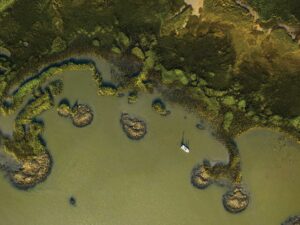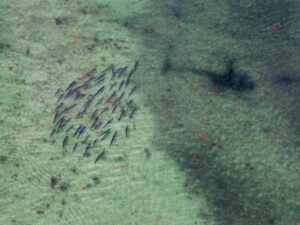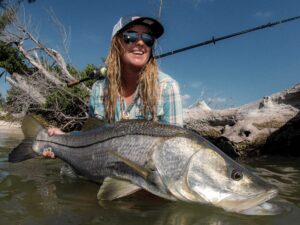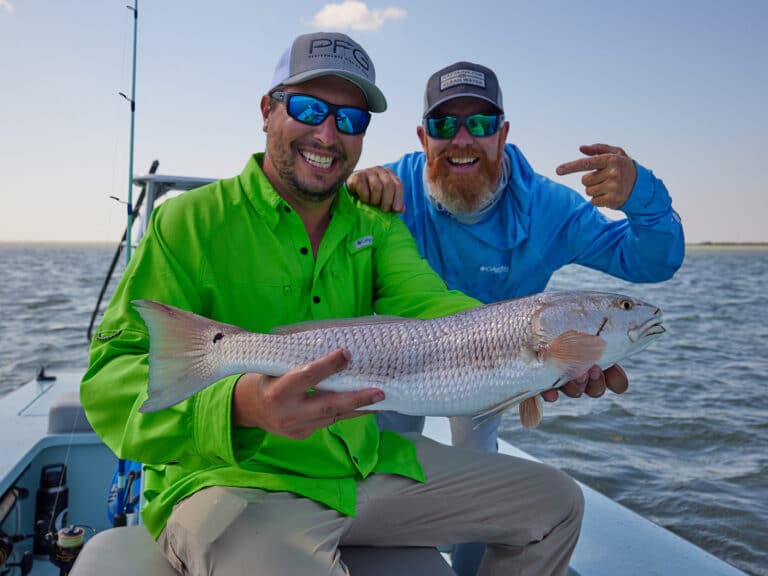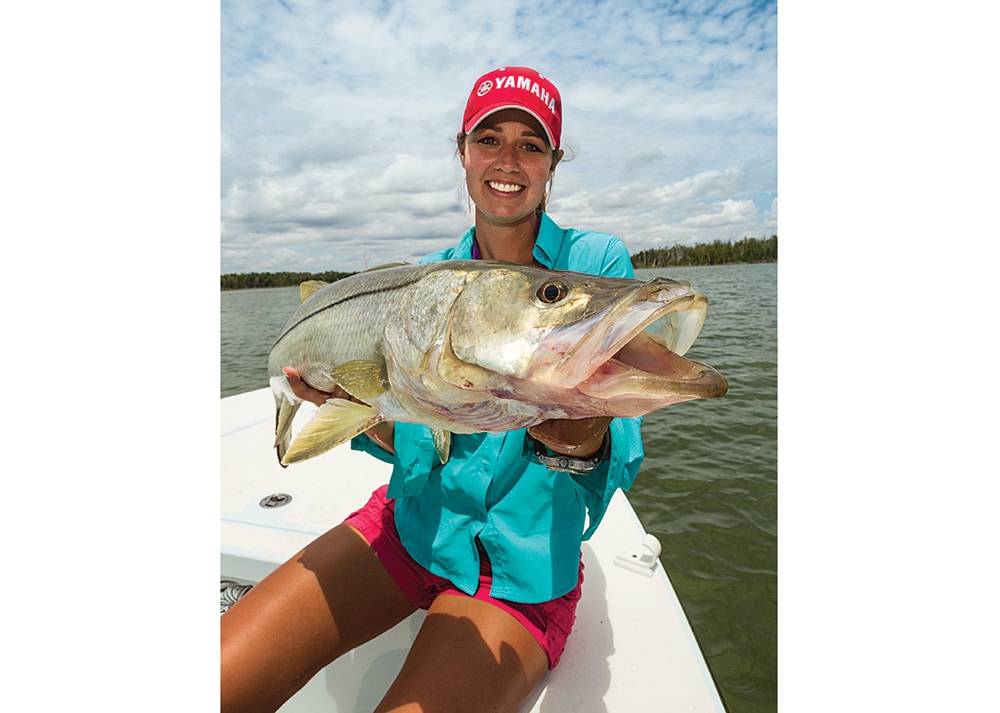
Everglades National Park occupies the southern tip of Florida, encompassing thousands of square miles of wilderness and a wide diversity of habitats. Florida Bay is the part of the park found beween the mainland and the Florida Keys, a rich body of shallow water that’s both remote and also eminently accessible.
At the extreme southern tip of mainland Florida, Everglades National Park spreads out across the state in an array of divergent habitats covering almost 1.5 million acres. Most people think of the vast sawgrass marshes made famous in Marjory Stoneman Douglas’ seminal 1947 book, The Everglades: River of Grass when they envision the park, and while it is made up mostly of such terrain, there also exists a different part of the park that fishermen can’t resist.
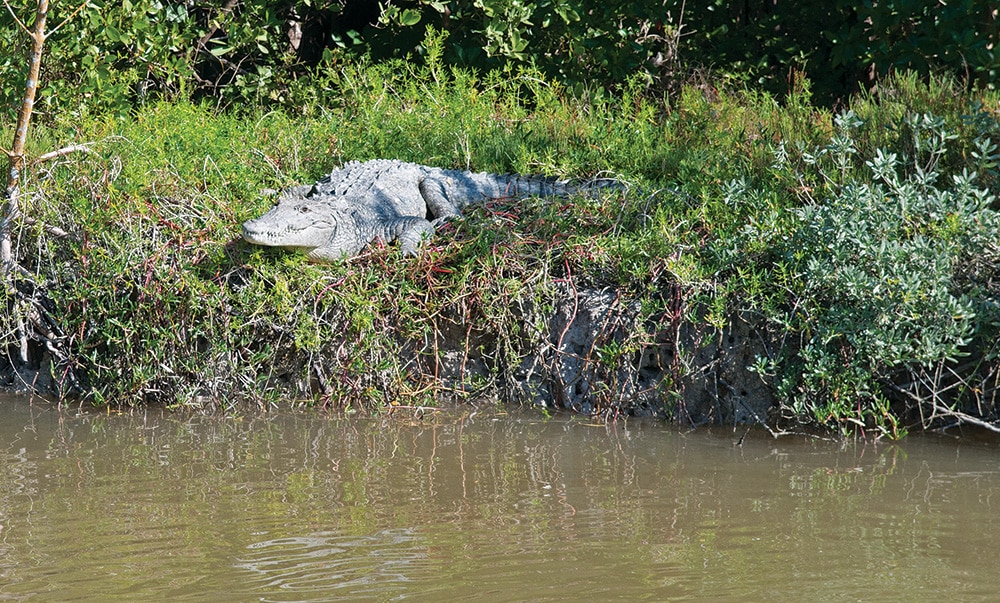
Think Shallow
Florida Bay, known universally among those who love to fish there as “the backcountry,” stretches from the southernmost tip of the mainland, south to the Florida Keys. The water in the bay seldom exceeds a depth of five feet, and in many places, it’s less than 18 inches deep for miles on end. Hundreds of mangrove islands dot the bay, and are ringed by shallow flats that make a perfect home for snook, redfish, spotted seatrout and lots more.
The mainland itself offers equally impressive opportunities along the shoreline, in the four shallow bights — Snake, Garfield, Rankin and Santini — carved into the landmass just east of Flamingo, the outpost at the end of the road stretching through the park from Florida City, or in several bays farther east. These bights and bays contain super-shallow water in a lot of instances, and can sometimes be fished only during high-water moon phases or weather conditions. But when you can get in there, the fishing can be spectacular.
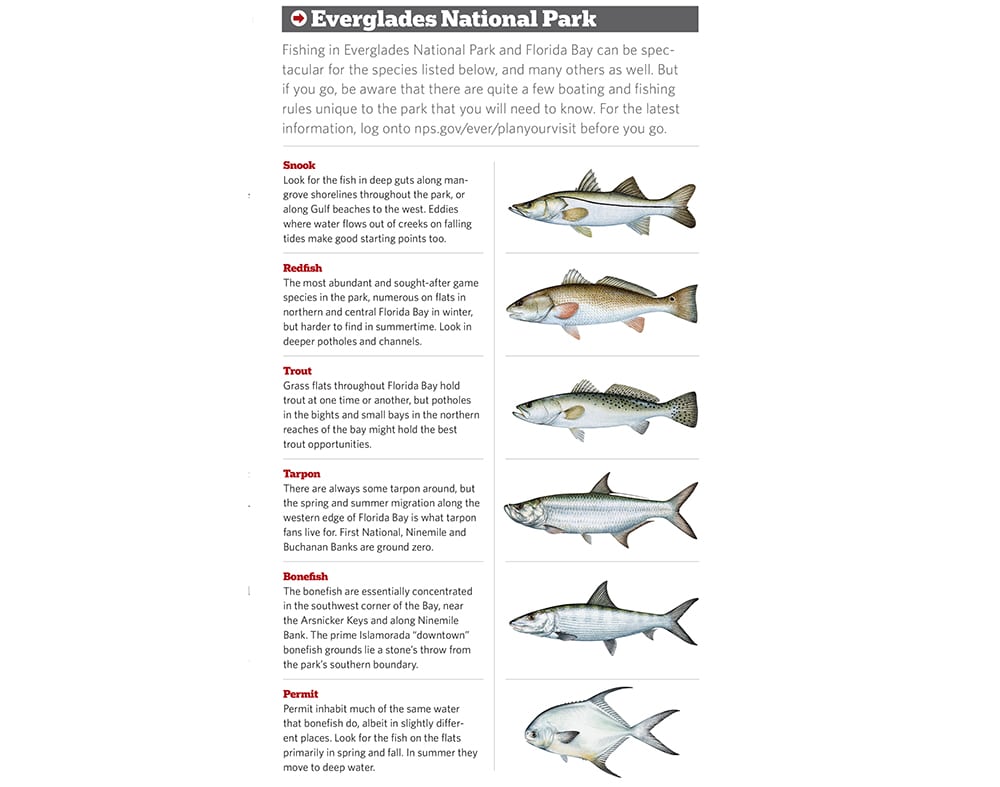
Start Right
The problem lies in knowing where to start. You can access Florida Bay from Flamingo, or from dozens of jumping-off points in the Keys from Key Largo through Islamorada, so getting there isn’t a problem. But with so many good-looking shorelines and flats to choose from, it’s a bewildering predicament deciding where to fish.
As with many such places, a good guide is worth his weight in gold. I happen to live at the southern end of the park; in fact, the boundary is just over a mile north of my house, and having fished there for 20 years or more as a nonprofessional, I have a decent knowledge of where to fish in Florida Bay. But I can’t hold a candle to the professionals who’ve devoted themselves to the bay; some of the finest shallow-water guides in the world ply the waters of the park every day, and days spent on the water with one of them will cut down your learning curve immensely.
Capt. Robert Klein is one such guide. Klein and his brother Tim are natives of Islamorada, and both are acknowledged experts at fishing Florida Bay. I recently got the chance to join Robert in fishing the first-annual Cheeca Lodge All-American Backcountry Fishing Tournament, and so got to spend several days taking advantage of his years of experience.
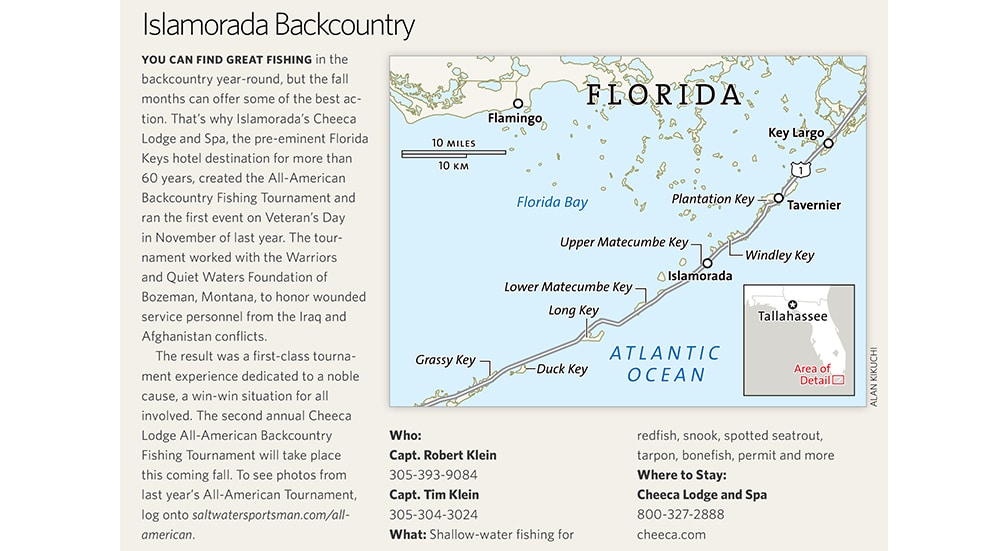
Work the Country
Klein stopped at several islands on the way north into the park from Islamorada, and poled his skiff along the edge of mud flats where large white potholes dotted the lush grass beds just beneath the surface. The areas attracted his attention because of “muds” near the flats — clouds of mud stirred up by feeding fish. On the third such stop, we struck pay dirt casting into these muds, as I hooked up with a nice redfish on my first cast.
We were throwing bonefish skimmer jigs tipped with live shrimp — a deadly combination for virtually everything swimming in the bay. “I’m a big fan of jigs tipped with shrimp,” Klein said, “but lots of other baits and lures work too. The live-bait guys do well with pilchards most of the time, and other people like Bass Assassins, Twisty Tails or Gulp! baits. It’s all about what you’re comfortable using.”
Where you fish depends on tides much of the time. “It’s always productive to work shorelines and the potholes in the grass flats,” Klein said. “Lots of different species lie in the potholes, waiting to ambush a bait that’s swimming by. Mostly you’ll find redfish and snook in there, but trout and jacks will lie in there too.”
Vast Options
After catching a couple of reds around islands in the center of the main bay, we moved into Madeira Bay, a few miles east of Flamingo. We poled a lee shoreline and successfully picked off a few more redfish that we spotted cruising down the shoreline. Accurate casts are obviously a necessity, as the fish swim tight to the shore in many instances, and you need to place your bait or lure right by their nose.
We later moved toward Flamingo, and set up poling a flat near Frank Key. “Some of the best fishing in the bay can be found right out in front of Flamingo,” Klein said. “I like to work those flats on the bottom of the falling tide and then the first two hours of the rise. You’ll see an amazing number of fish right there.”
The flat in question runs east and west for several miles, just north of Frank and Murray keys, less than two miles from the Flamingo boat ramp. Once again, look for potholes in the grass flats and telltale signs of fish moving in the form of mud trails.
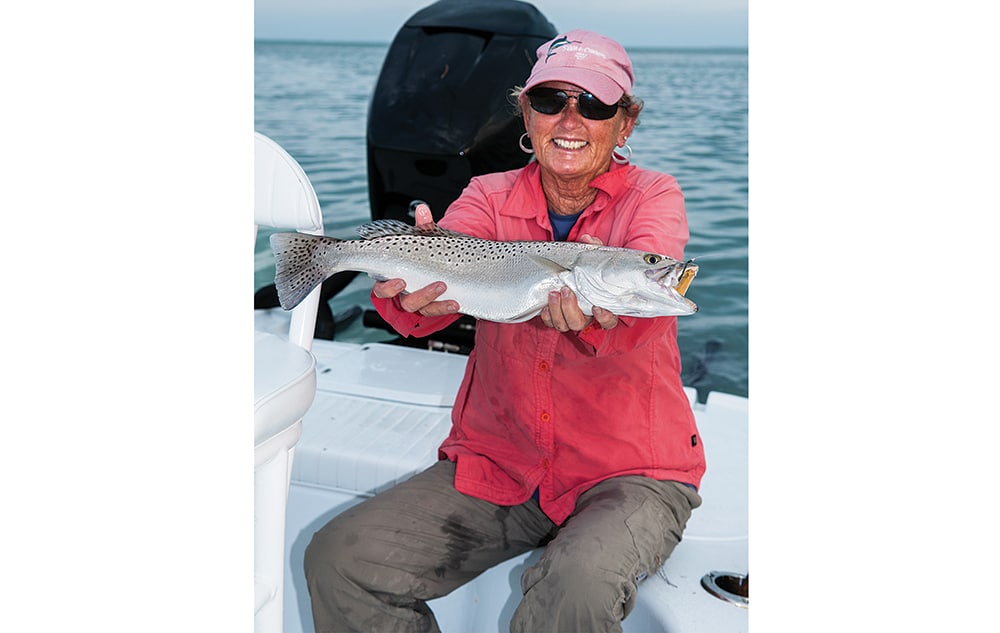
Keep Pushin’
Another highly productive spot lies just east of Flamingo, in Snake Bight, which is now almost entirely a no-combustible-motor zone, having been designated a pole-and-troll-only area by the park service. A deep channel along the western edge of the Bight leads north toward the mainland, and it’s a hugely popular place to fish on falling tides, as numerous sloughs drain into the channel, washing along bait.
“Snake Bight channel is a great spot and it holds a lot of fish,” Klein said, “but it can get really crowded, especially on weekends.” For those who don’t mind using a push pole or an electric trolling motor, the huge area of flats east into Snake Bight proper provide some truly amazing action for redfish and snook. Just make sure not to get caught in there when the tide falls, as much of the area dries on certain low rides, and you could be there awhile.
Klein and I scored on many nice redfish, plus a decent trout or two and a few small snook — not tournament winners but fun all the same. Our fishing over the course of the tournament took us from west of Flamingo to Madeira Bay, with lots of islands in between; we covered a lot of territory, but that’s what’s great about fishing Florida Bay — territory abounds.
Grab Bag
A week after the tournament, I returned to the shoreline of the mainland in my own boat, tossing Gulp! lures along a sand beach on a falling tide. My wife, Poppy, and I had a blast releasing several nice redfish and a speckled trout or two, but on a subsequent cast, a huge boil erupted around my lure, and a second later, a snook who will never see 20 pounds again cleared the surface. He put up a spirited fight, but I had him boat-side in a few minutes, where he proceeded to throw my hook as I tried to grab his jaw for a photo.
That’s Florida Bay fishing. You never know what you’re going to encounter. Deep in the park, expect snook, redfish and trout, and along the outer edges to the west and south, you can also find world-class fishing for bonefish, tarpon and permit, the latter two on a seasonal basis. This diverse list of prime species isn’t available in many other spots, especially in the continental U.S.
It’s almost overkill to mention the area’s natural beauty. Great fishing found in a gorgeous setting compels us to declare Florida Bay to be Florida’s best inshore hot spot.
Islamorada Backcountry Tackle Box
- Rods: Light spinning rods suitable for 8- to 12-pound-test monofilament, or braid to suit.
- Reels: 3500 to 4500 size spinning reels with smooth drags, capable of holding 200 yards of 8- or 12-pound mono, or equivalent braid.
- Leader: Nylon or fluorocarbon monofilament leader, 20- to 40-pound-test. Nylon mono works fine in muddy water, but switch to fluorocarbon when things clear up.
- Lures/Baits: Skimmer jigs tipped with shrimp, Bass Assassins, D.O.A. Shrimp, Gulp! Lures, Mister Twister Slug lures. Effective live baits include live shrimp on popping corks, and live pilchards.


